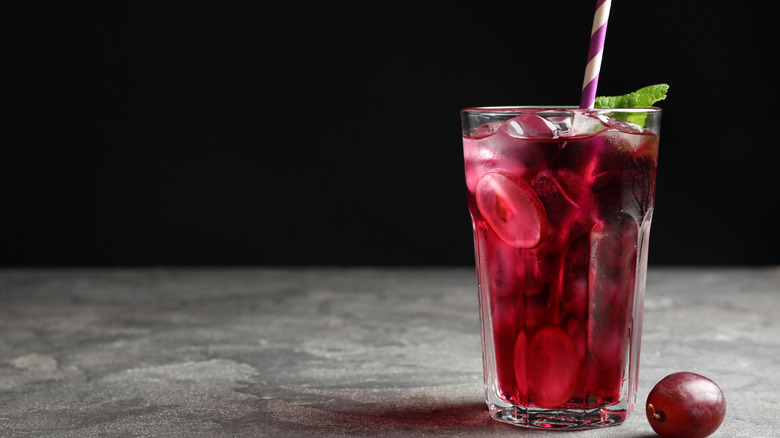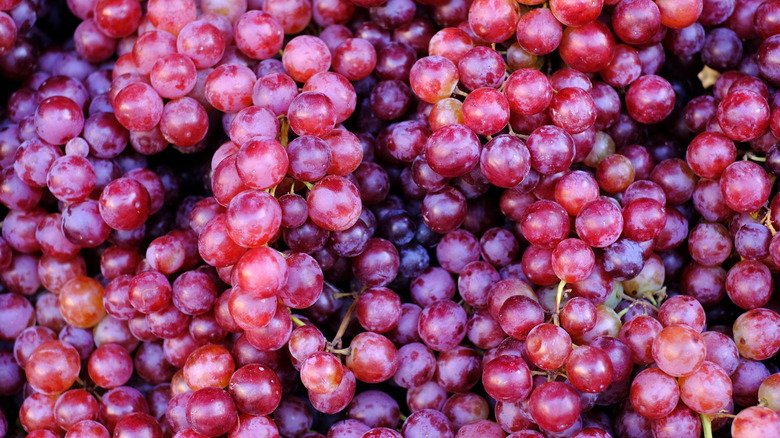Here's Where Artificial Grape Flavor Really Comes From
Grapes are ubiquitous, in everything from lunch boxes and salads to cocktails and smoothies. They're delicious, fresh, somewhat healthy, and totally simple to eat on the go. Their bright colors — whether purple-red or green — infuse whatever they're added to with a pop of color (and not to mention flavor). They're also the basis for wine, verjus, and raisins.
On the other hand, if you've ever had grape soda, frozen grape products, grape fruit snacks, grape candy, or anything of that ilk, you may have wondered what exactly constituted the "grape" flavor in those products, which — let's be honest — can sometimes taste decidedly non grape-esque.
Indiana Public Media says that the first artificial grape flavor originated in the late 1800s, when scientists were able to isolate a particular grape-smelling chemical from what was then known as orange blossom extract. This specific chemical is called methyl anthranilate, and in those days it was used in many perfumes and colognes. This original extract was actually also combined with coal byproducts. The World states that the scent was so deeply reminiscent of grapes that it was then used in grape-flavored products, specifically soda.
A surprising correlation
It wasn't until years later that someone noticed that this chemical is actually found in real grapes, too, as noted by First We Feast. So, what was once the basis of "artificial" grape flavoring actually turned out to be not too artificial after all.
Business Insider states that concord grapes are the grape variety that most closely resemble the aroma, while red or green grapes (which are more common) have a slightly different flavor, color, and smell. This may also explain why grape flavoring can sometimes seem so vastly different from real grapes. In actuality, though, artificial grape flavoring isn't nearly as far removed from "real" grapes as you may have thought. If you were to cook down Concord grapes with some sugar and puree them, you may find the resulting flavor to be very similar to the flavor of grape soda or grape candy.
So there you have it. Rest assured that your artificially-flavored grape products, beverages, and candies aren't so very artificial after all.

